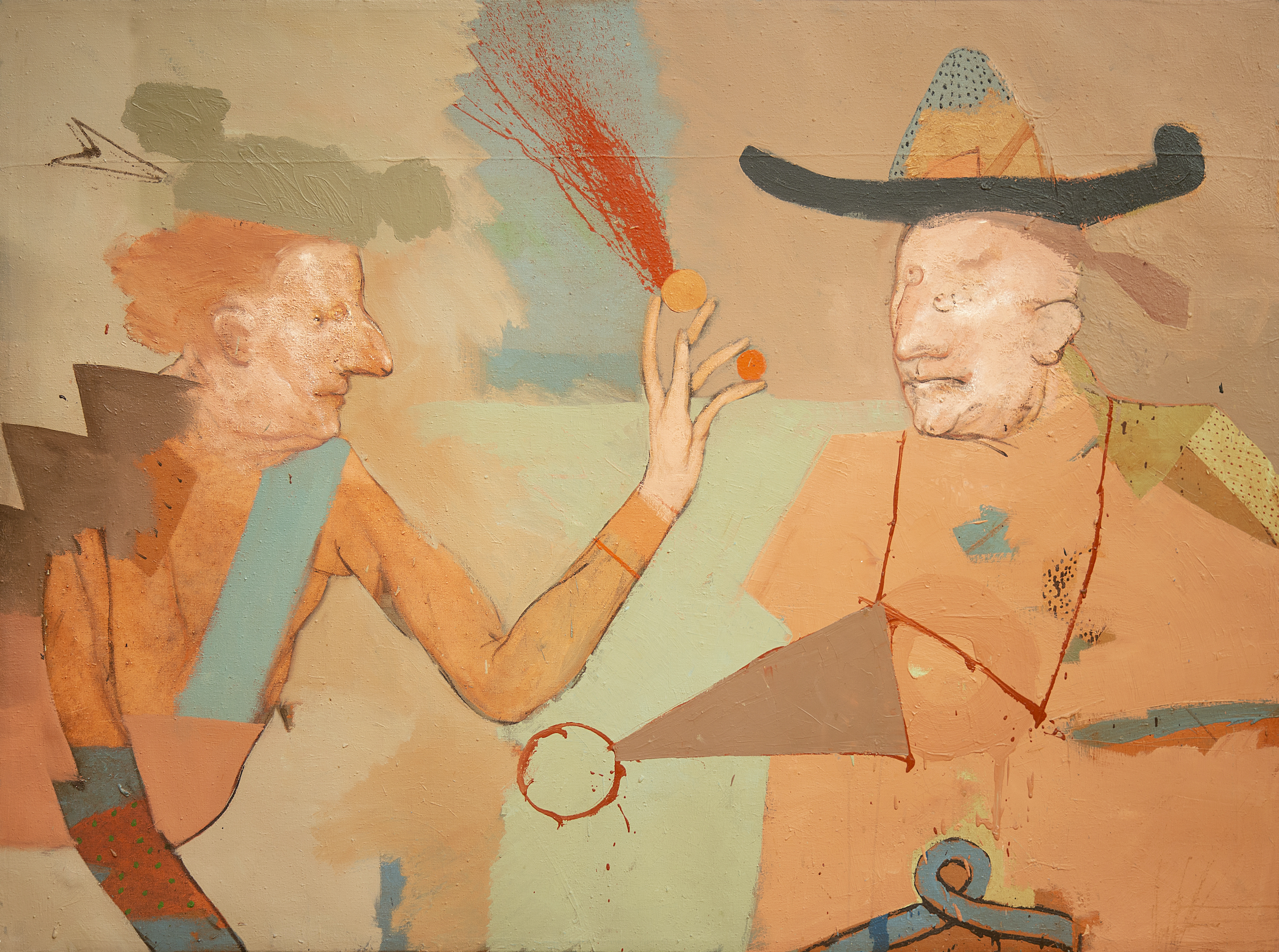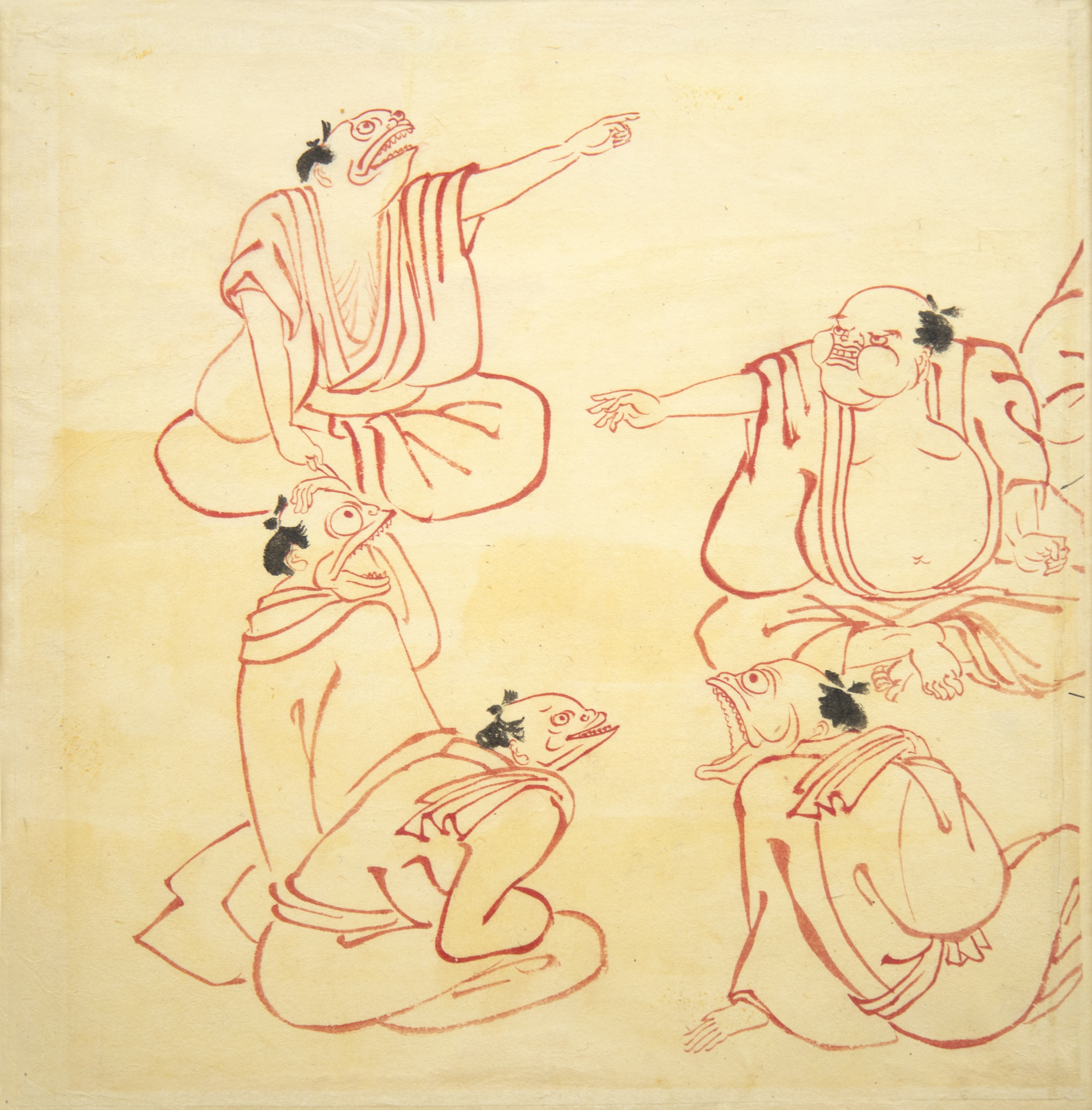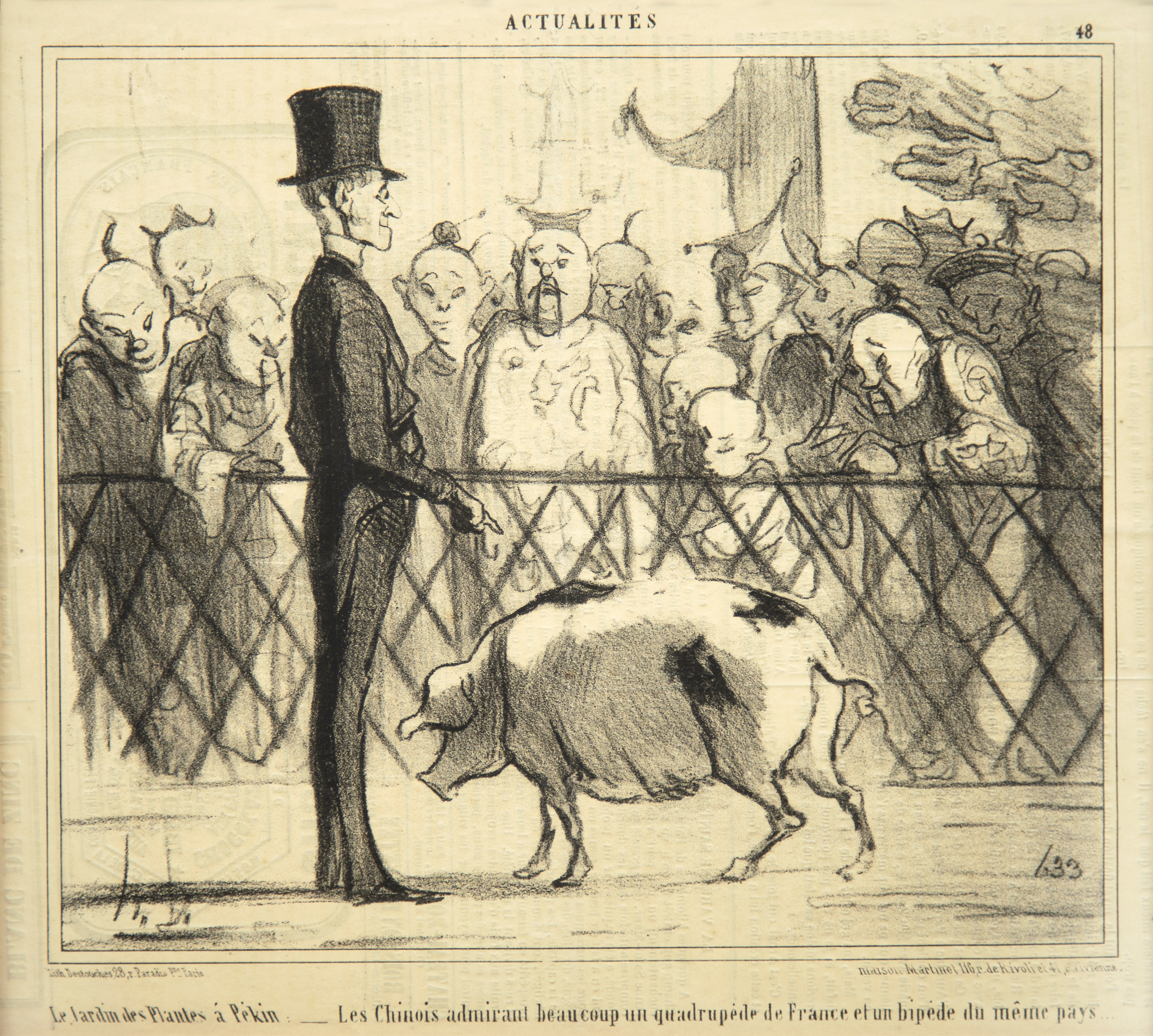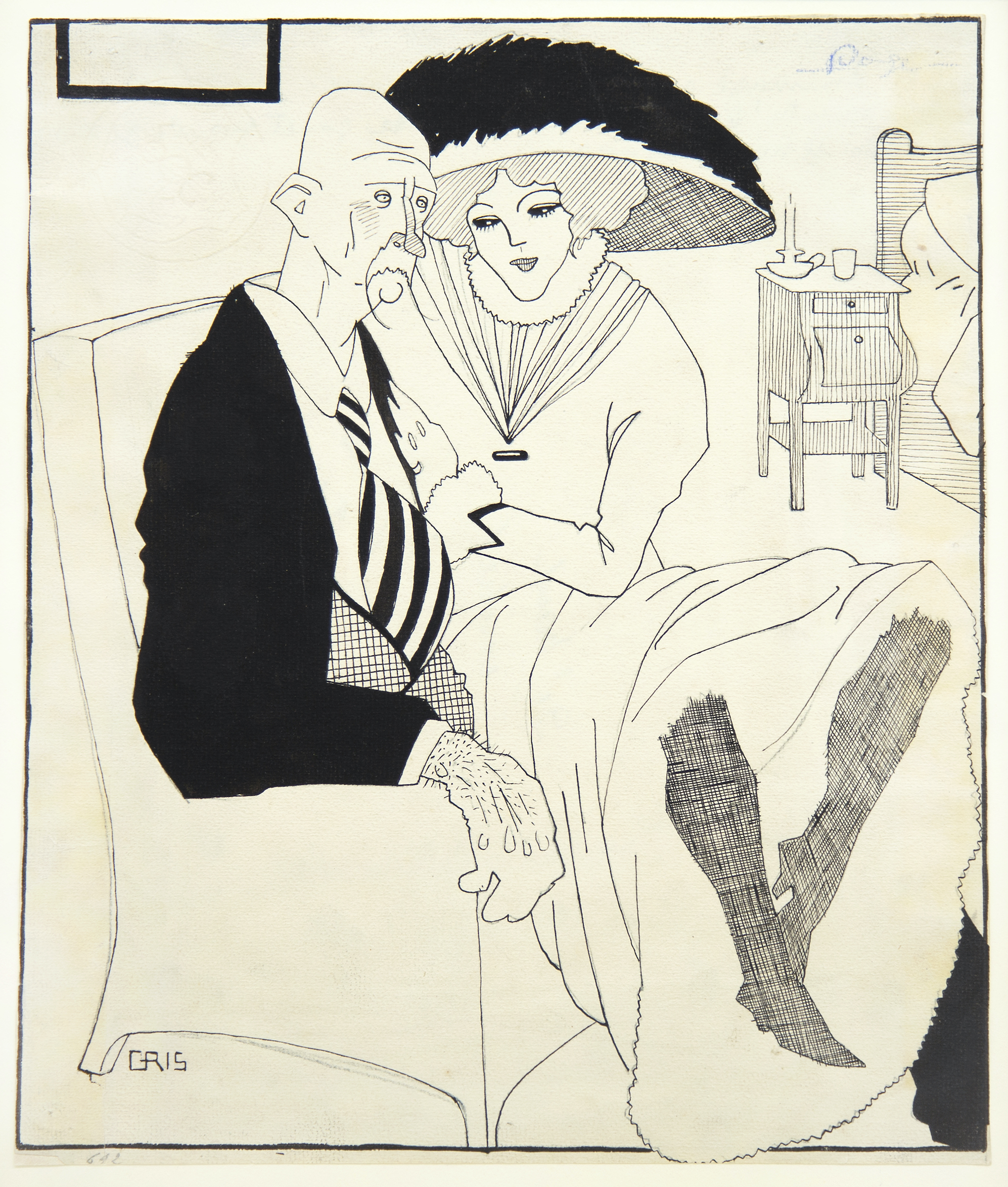Caricature derives from the Italian verb caricare (“to load,” “to surcharge” as with exaggerated detail). Bernini, for example, was known for his ability in caricature and introduced the idea in France when he visited in 1665. Faces and profiles drawn by da Vinci and Durer in or around 1500 describe types of visages not unlike the Menzel print in the exhibition. Much earlier forms include the Mask of Silenus, the satyr whose distorted features portray the drunken companion of Dionysus in Greek mythology.
Like strange bedfellows, satire and caricature mirror one another, and the boundaries are not always apparent. For centuries, artists have used satire or caricature to delineate the physical characteristics or differences between human beings. The proliferation of satiric representations arose in the 19th century with the association of printed portraits skewering famous individuals and events with journalism, and published in popular magazines of the day including La Caricature, founded in France in 1830. Works by Goya, Daumier, and Hogarth, form an arc from which many later works spring from, up to the modern works of William Gropper who cited Goya’s famed suite of prints, Los Caprichos, as a primary influence.
Miguel Conde | Caricature of Five Men | Honore Daumier | Sharaku Toshusai | Juan Gris
Miguel Conde
The Jesters, 1971
Oil on canvas
Gift of Lisa and Bernard Selz, 2019.2.1
Anonymous
Caricature of Five Men
Japan, Tokugawa period (Edo), 18th c.
Colored ink on paper
Gift of the Friends of Queens College Library, 66.5
Honore Daumier
“Le Jardin des Plantes à Pékin—Les Chinois admirant beaucoup un quadrupéd de France et un bipède du même pays. . . . “ (The Botanic Garden at Peking—The Chinese admire a quadruped from France and a biped from the same country. . . . ), Published in Le Charivari, May 13, 1854
Lithograph
Gift of Audrey McMahon, P69
Sharaku Toshusai
The Kabuki actor Sawamura Sojuro III, 1794
Edo period, 1603-1868
Woodcut with ink and mica on paper
Unknown donor, P0279
Juan Gris
C’est dommage que tu ne sois plus jeune
(It’s too Bad You’re not Young Anymore), c. 1911
India ink and graphite on paper
Gift of Mr. and Mrs. Harold Diamond, 59.179
Images by Jacqui Hopely Monkell





